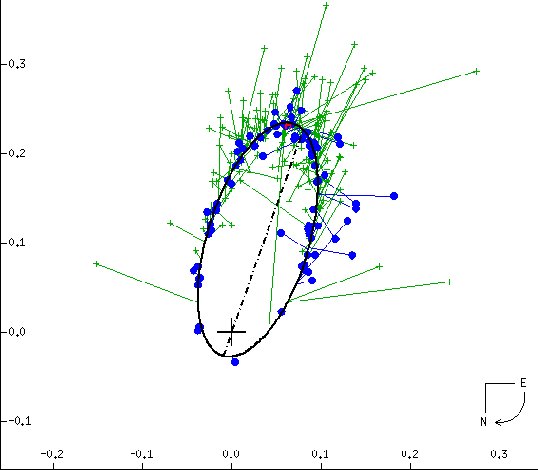
 |
Zeta Sge B goes around somewhat brighter Zeta A (at the cross) on a quite eccentric orbit that takes 23.24 years to complete at a calculated average separation of 10.6 (though probably larger) Astronomical Units. In reality, the two go about a center of mass that lies very nearly between them. The major axis (the dot-dash line) does not quite fit because of the tilt of the orbit to the plane of the sky. From the Sixth Catalog of Orbits of Visual Binary Stars , W. I. Hartkopf and B. D. Mason, US Naval Observatory Double Star Catalog, 2006. |